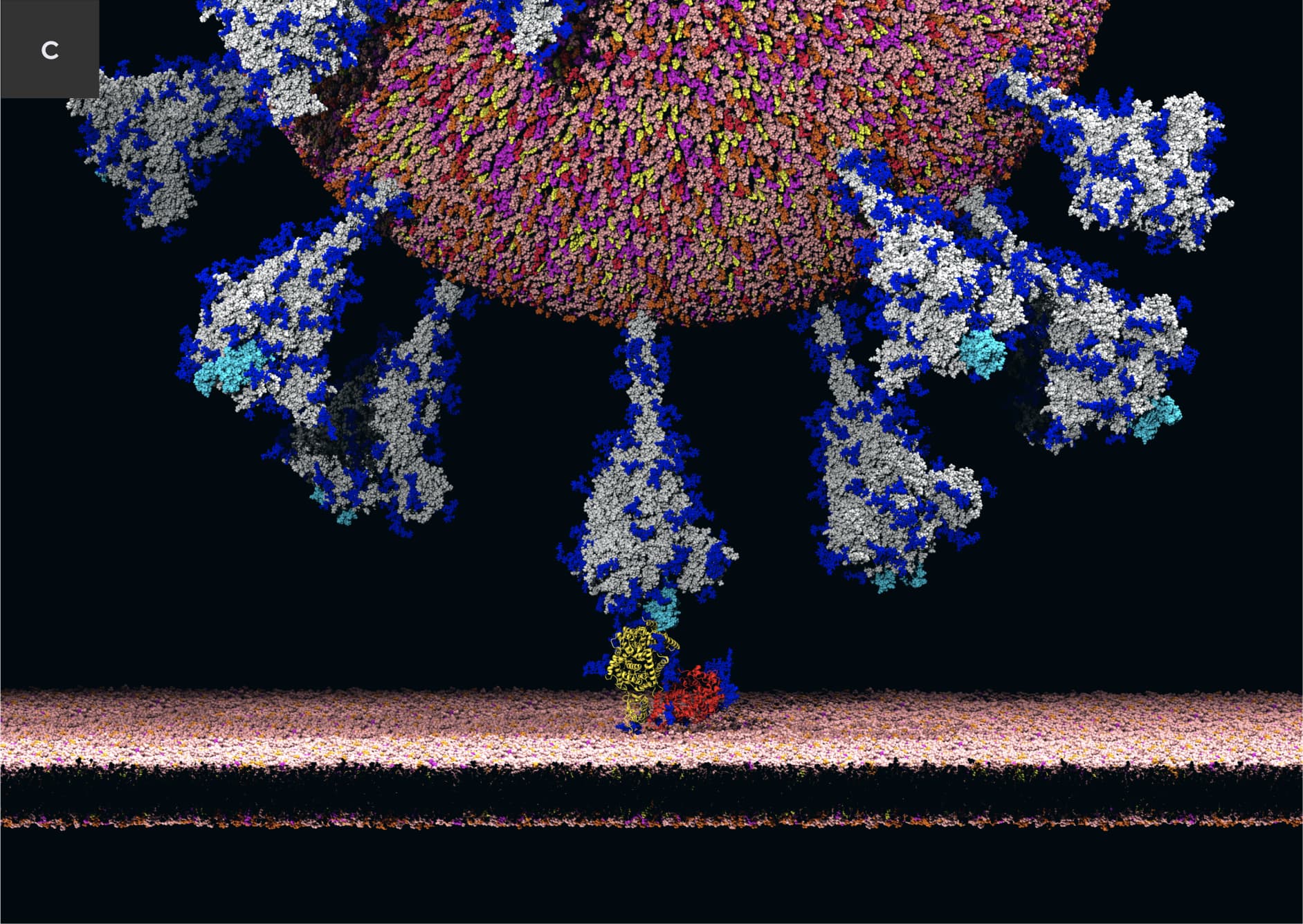— Research
Seeing is Understanding
For the first few months of the pandemic, SARS-CoV-2 was called simply “the novel coronavirus.” “Novel,” meaning scientists hadn’t seen it before

For the first few months of the pandemic, SARS-CoV-2 was called simply “the novel coronavirus,” “novel,” meaning scientists hadn’t seen it before. And yet the ability to see — really see, at the atomic level — what a microbe looks like and how it interacts with human cells is crucial in helping researchers design better methods to prevent or disrupt those interactions.
Rommie E. Amaro, PhD, professor in the UC San Diego Department of Chemistry & Biochemistry, and collaborators, were among the first to get a close look. They created models of the virus and its interactions with human cells, based on structural data generated from cryo-electron tomography and cryo-electron microscopy — leading-edge techniques that allow researchers to glimpse molecular structures at unprecedented resolution — and a combination of computer modeling and molecular dynamics simulations.
The models revealed a trove of information. For example, SARS-CoV-2’s infamous spike protein, protrusions that help it grab hold of human cells, is coated in sugar molecules known as glycans. These glycans change the spike protein’s shape — important information for researchers trying to target it with new drugs, or drum up antibodies against it with vaccines.
A. THE VIRUS
Image credit: Lorenzo Casalino
Modeling credit: Abigail C. Dommer, Lorenzo Casalino
Zied Gaieb, Rommie E. Amaro
B. THE SPIKE PROTEIN
Image credit: Lorenzo Casalino
Modeling credit: Lorenzo Casalino, Zied Gaieb, Rommie E. Amaro
C. THE INFECTION
Image credit: Lorenzo Casalino
Modeling credit: Lorenzo Casalino, Abigail C. Dommer Zied Gaieb, Emilia P. Barros, Rommie E. Amaro



